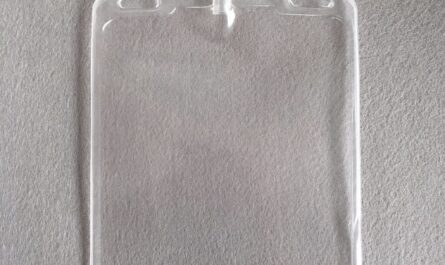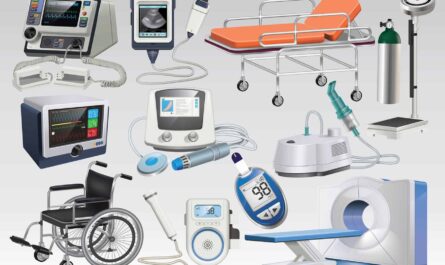Nitinol, a nickel-titanium alloy, has revolutionized the field of medical devices since its discovery in the 1960s. Its unique properties have enabled the development of minimally invasive procedures and improved clinical outcomes for patients.
The Discovery of Shape Memory and Superelasticity
Nitinol exhibits two fundamental material properties that are central to its use in medicine – shape memory effect and superelasticity. In 1962, investigators at the Naval Ordnance Laboratory discovered that nitinol remained flexible even at sub-zero temperatures where other metals become brittle. Upon heating, the alloy would return precisely to its pre-deformed shape. This phenomenon, known as shape memory effect, occurs due to a crystal structure change in the alloy brought upon by temperature variations.
In addition, Nitinol Medical Devices can withstand very high strains, over 10% in some cases, far greater than other metals before reaching their yield point. This superelastic behavior is due to stress-induced crystal structure transformations in the alloy. Nitinol’s ability to regain its shape after significant deformation enables devices to be delivered in a constrained form and deploy accurately upon use. Its shape memory and superelastic traits together minimize trauma to vessels and tissues during medical procedures.
Evolution of Endovascular Applications
One of the earliest medical uses of nitinol was in guidewires designed for coronary and peripheral applications in the late 1970s. Nitinol guidewires could navigate tortuous anatomy with greater flexibility compared to stainless steel wires. Today, nitinol guidewires are ubiquitous due to their excellent trackability and kink resistance. Another landmark was the development of the nitinol stent in the 1980s to treat blockages in blood vessels. Nitinol stents could easily be delivered through narrow catheters and precisely expanded at the target site due to the alloy’s superelasticity.
In subsequent years, Nitinol Medical Devices enabled new possibilities in minimally invasive endovascular repair of vascular diseases. Stent grafts made of nitinol fabric scaffolding were created for repair of abdominal aortic aneurysms without open surgery. These modular endografts could be staged through the femoral arteries and reconstitute the aorta from inside using nitinol’s shape memory effect. More recently, complex vasculatures such as cerebral or pulmonary arteries are treated with self-expanding nitinol coils, filters, and embolization devices to occlude abnormal channels.
Advances in Interventional Cardiology
Cardiology has greatly benefited from nitinol with the emergence of advanced catheter technologies. Nitinol guidewires and balloon catheters allow delicate interventions inside the heart to be performed with precision. Nitinol balloons for angioplasty can withstand high pressures without deformation and accurately track through tight lesions. Nitinol rings on balloon catheters improve pushability and crossability. Most importantly, nitinol stent technology revolutionized cardiac revascularization. Self-expanding nitinol stents can be crimped to low profiles and deployed precisely at blockages to restore blood flow in coronary arteries.
The field continues to advance with innovative nitinol-based solutions. Recently, flow diverters made of tightly woven nitinol mesh have emerged as a breakthrough for minimally invasive treatment of cerebral aneurysms. These self-expanding stent grafts reroute blood flow away from aneurysmal sacs, promoting their occlusion without surgical clipping. Nitinol devices are also being investigated for mitral and tricuspid valve repair procedures previously requiring open heart surgery. Clearly, nitinol’s versatile mechanics have made it indispensable for modern interventional cardiology.
Emergence in Neurovascular Applications
Debulking and reconstruction of complex cerebrovascular pathology was enabled by nitinol. Shape-setting nitinol wires are key components of microcatheters and microguidewires used for navigating the intracranial circulation. Retrievable nitinol coils of various designs allow minimally invasive aneurysm embolization. Flow diverters as mentioned earlier provide an alternative to craniotomy for select aneurysms. Several reconstructive techniques also rely on nitinol, such as stent-assisted coiling where self-expanding nitinol stents stabilize coils within the aneurysm.
Other important nitinol-based neuro devices include intracranial stents to treat stroke and intracranial atherosclerosis. Recent trials demonstrated safety and efficacy of self-expanding nitinol stents compared to angioplasty alone. Nitinol embolectomy devices such as the Solitaire stentriever have become the standard of care for minimally invasive mechanical thrombectomy in acute ischemic stroke. Nitinol’s biocompatibility and shape recovery make it ideal for the ever-advancing field of neurointervention.
Commercialization
The past few decades have seen an explosion in the commercial availability of nitinol medical devices. Major applications include vascular devices, guidewires, retrieval devices, embolic protection systems, stents and stent grafts. The global nitinol medical device market was valued over $10 billion USD in 2020 and is projected to grow steadily with the rise of endovascular therapies. New technologies on the horizon include surgical robotics, drug eluting stents, and bioresorbable scaffolds leveraging nitinol’s unique mechanics. With continued material science advances, nitinol promises to further minimize invasiveness and improve clinical outcomes across many areas of medicine. Its shape memory and superelastic properties represent an enabling technology that will transform patient care well into the future.
*Note:
1. Source: Coherent Market Insights, Public sources, Desk research
2. We have leveraged AI tools to mine information and compile it
About Author - Vaagisha Singh
Vaagisha brings over three years of expertise as a content editor in the market research domain. Originally a creative writer, she discovered her passion for editing, combining her flair for writing with a meticulous eye for detail. Her ability to craft and refine compelling content makes her an invaluable asset in delivering polished and engaging write-ups. LinkedIn


 by
by 


